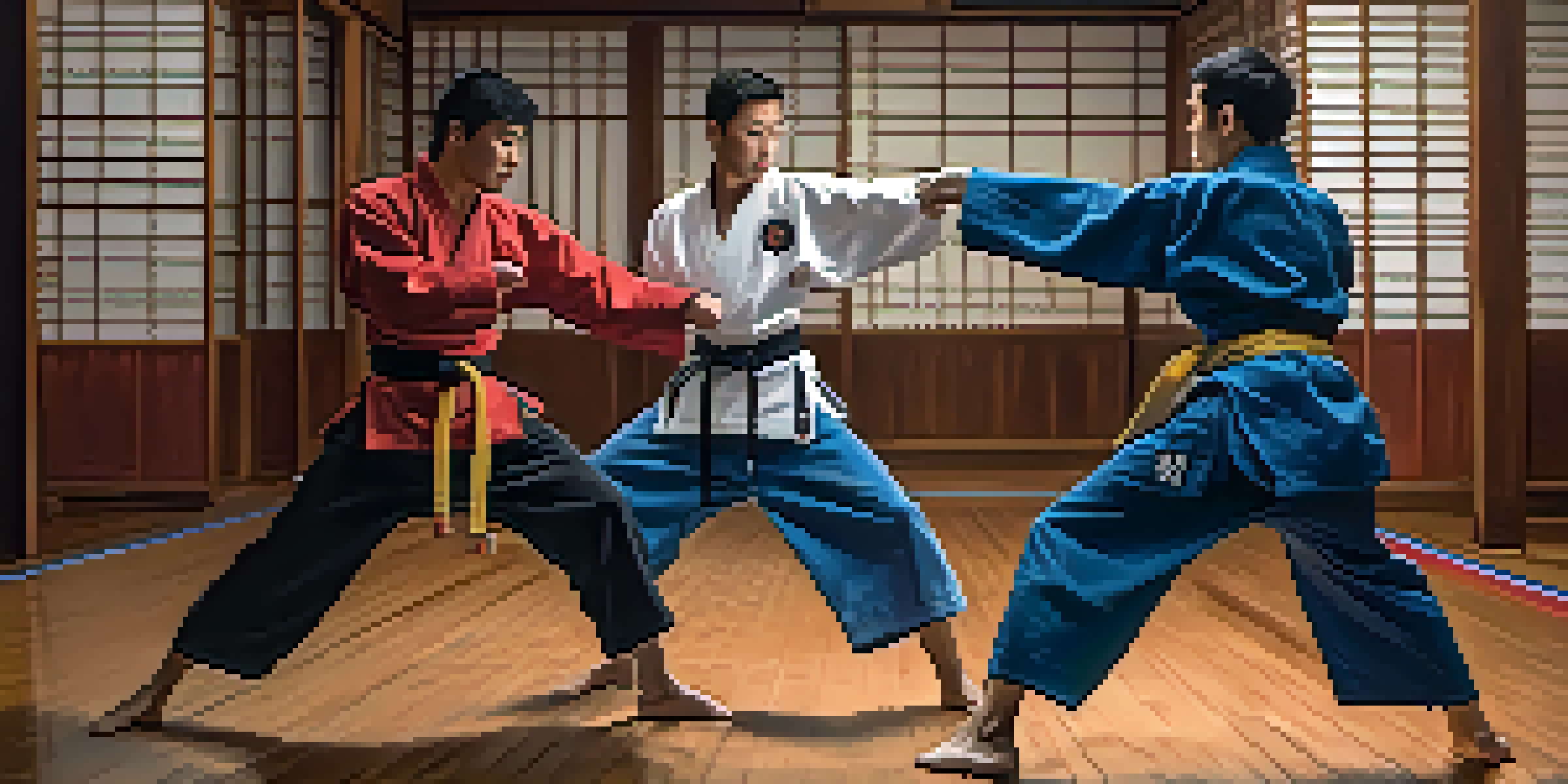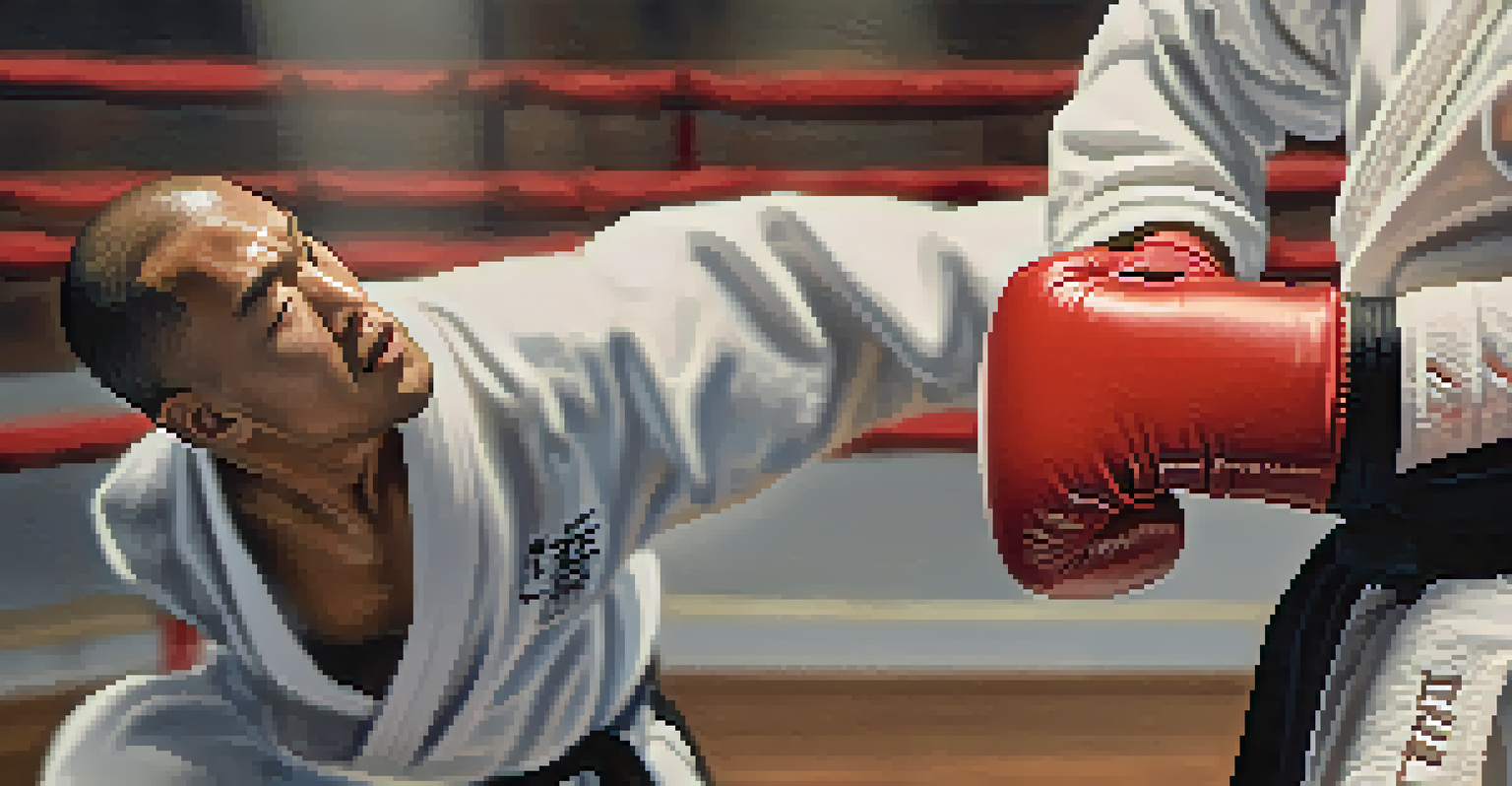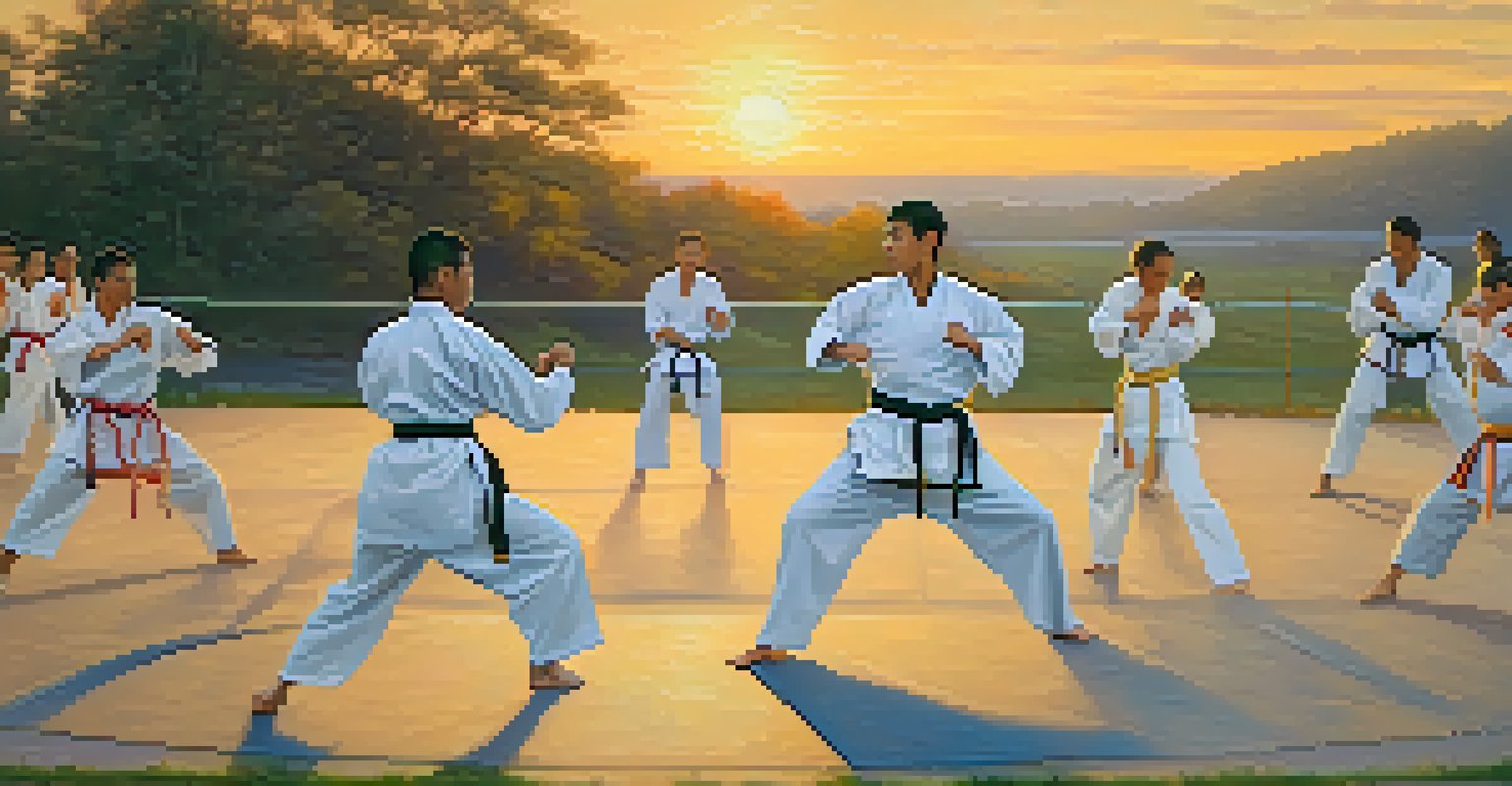The Basics of Sparring: Rules and Techniques Explained

What is Sparring and Why It's Important in Martial Arts
Sparring is a crucial component of martial arts training, allowing practitioners to practice their techniques in a controlled environment. It simulates real combat situations, giving fighters the opportunity to test their skills against a live opponent. This practice not only hones physical abilities but also develops mental resilience and strategic thinking.
The more you sweat in training, the less you bleed in battle.
Through sparring, martial artists learn to adapt and respond to various attacks, improving their timing and distance management. It serves as a valuable tool for assessing progress, as fighters can see firsthand how their training translates into performance. Essentially, sparring is where the theory meets practice, and it's essential for anyone serious about martial arts.
Moreover, sparring promotes camaraderie among practitioners, fostering a sense of community. As fighters challenge each other, they also build trust and respect, which can enhance the overall training experience. Whether you’re a beginner or a seasoned fighter, understanding the importance of sparring is key to your martial arts journey.
Basic Sparring Rules Every Beginner Should Know
Before stepping onto the mat, it's vital to understand the basic rules of sparring to ensure safety and fairness. Most sparring sessions will start with a set of agreed-upon rules, such as the level of contact allowed, types of techniques permitted, and specific target areas. This agreement lays the groundwork for a productive and respectful training environment.

One common rule is to maintain control during sparring; this means avoiding excessive force and focusing on technique rather than brute strength. Practitioners are also usually encouraged to wear protective gear, including headgear, mouthguards, and gloves, to minimize the risk of injury. Remember, the goal is to learn and improve, not to overpower your opponent.
Sparring Enhances Skills and Strategy
Sparring allows martial artists to practice techniques in a realistic setting, improving both physical abilities and strategic thinking.
Another key aspect is the importance of sportsmanship; even in a competitive atmosphere, respect for your partner is paramount. Acknowledging your partner's skill and effort helps create a positive training experience for everyone involved. By adhering to these basic rules, you can ensure that sparring remains a safe and beneficial part of your martial arts practice.
Essential Sparring Techniques for Beginners
Before diving into sparring, it’s crucial to familiarize yourself with some foundational techniques. Start with basic stances like the guard position, which helps protect you while allowing for quick movements. Understanding how to transition between stances can significantly enhance your ability to respond to your opponent’s actions.
It's not the size of the dog in the fight, it's the size of the fight in the dog.
Next, focus on footwork; the ability to move swiftly and maintain balance is vital in sparring. Practice drills that promote lateral movement and quick pivots. Good footwork not only helps you evade attacks but also positions you better for counterattacks, making it a critical element of effective sparring.
Lastly, work on your combinations; striking with a series of punches or kicks in quick succession can keep your opponent on their toes. For instance, a jab followed by a cross can create openings for more powerful strikes. By mastering these essential techniques, you’ll build a solid foundation for more advanced sparring practices.
Understanding Sparring Etiquette and Sportsmanship
Sparring isn’t just about physical skills; it also involves a set of etiquette that fosters respect and camaraderie. Always greet your partner before and after sparring sessions, as this establishes a friendly, sportsmanlike atmosphere. A simple handshake or nod can set a positive tone for the training ahead.
During sparring, it’s essential to communicate effectively with your partner. This means being vocal about your intentions, such as signaling when you’re ready to start or if you need to take a break. Open communication helps both participants feel comfortable and ensures a safe sparring experience.
Basic Rules Ensure Safe Sparring
Understanding and adhering to basic sparring rules, such as maintaining control and using protective gear, is essential for safety and fairness.
Additionally, remember to be gracious, whether you win or lose. Acknowledging your partner’s skills, regardless of the outcome, cultivates mutual respect. By following these etiquette guidelines, you create a more enjoyable and productive environment for everyone involved in sparring.
Common Mistakes to Avoid in Sparring
Even experienced fighters can fall into common traps during sparring. One of the biggest mistakes is losing control and sparring too aggressively, which can lead to injuries for both participants. It’s essential to remember that sparring is a learning experience, and maintaining control should always be a priority.
Another frequent error is neglecting to use proper technique. Relying on raw power can limit your growth and effectiveness in sparring sessions. Instead, focus on executing techniques correctly, as this will not only improve your performance but also help you develop better habits for future fights.
Finally, a common mistake is failing to adapt. Each sparring session will present different challenges, and being rigid in your approach can hinder your progress. Stay open-minded and willing to adjust your strategy based on your partner's movements, which will ultimately enhance your sparring experience.
The Role of Sparring in Building Confidence
Sparring can be a transformative experience, especially when it comes to building confidence. As you practice and refine your techniques against a live opponent, you become more familiar with your capabilities. This increased familiarity can significantly reduce anxiety and self-doubt, making you feel more prepared for real-life situations.
Moreover, each successful sparring session can boost your self-esteem. Overcoming challenges, such as landing a well-timed strike or defending against an attack, reinforces your skills and accomplishments. Celebrate these small victories, as they contribute to a growing sense of confidence in your abilities.
Confidence Grows Through Sparring
Participating in sparring sessions helps build confidence by familiarizing practitioners with their skills and teaching resilience in the face of challenges.
Additionally, sparring teaches resilience; it's about learning to get back up after being knocked down. Each time you step back onto the mat, you're reinforcing the idea that perseverance is key to success in martial arts. This mindset of resilience can spill over into other aspects of life, making sparring a valuable tool for personal growth.
Progressing Your Sparring Skills: Tips for Improvement
To truly excel in sparring, continuous improvement is essential. Start by setting specific goals for each session; whether it's working on a particular technique or enhancing your footwork, having clear objectives can guide your practice. This focused approach allows you to track progress and stay motivated on your martial arts journey.
Another effective strategy is to seek feedback from your sparring partners or instructors. Constructive criticism can provide valuable insights into areas needing improvement and help you refine your technique. Embracing feedback can turn weaknesses into strengths, enhancing your overall performance.

Lastly, don’t forget to analyze your sparring sessions. Recording your practices or reflecting on what went well and what didn’t can offer crucial lessons for future sessions. By actively seeking improvement and embracing a growth mindset, you can elevate your sparring skills to new heights.